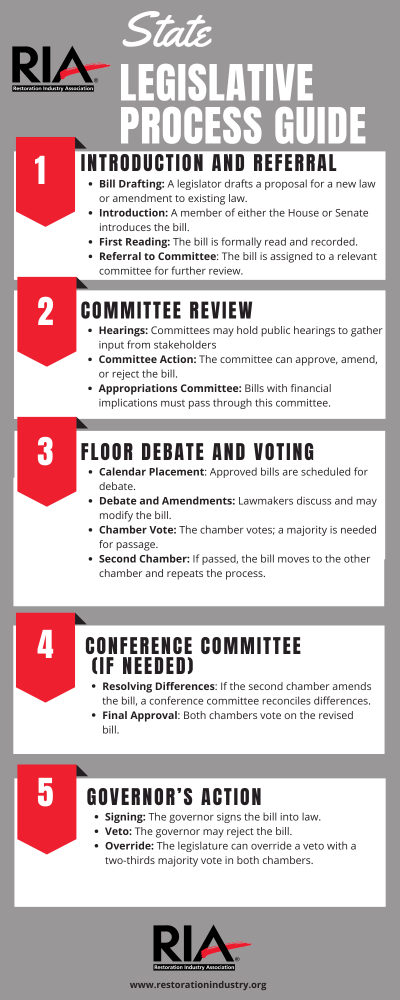How a State Bill Becomes Law
How a State Bill Becomes Law
A Quick Guide for Restoration Contractors
Whether it's licensing changes, price cap extensions, or insurance contract rules, state legislation can directly impact your business. This guide explains how a bill becomes law—and when you can help shape it.

Step 1: Bill Introduction
A legislator (state representative or senator) drafts and introduces a bill in their chamber.
Bills can originate from lawmakers, associations, or even public requests.
Step 2: Committee Assignment & Hearing
The bill is assigned to a relevant committee, like Business & Commerce, Insurance, or Licensing. This committee will often hold a public hearing where stakeholders (like RIA members) can testify or submit written feedback.
This is the most critical point for grassroots advocacy.
Step 3: Floor Debate & Vote
If approved by the committee, the bill is sent to the full chamber for debate, amendments, and a vote.
RIA monitors floor votes and helps identify potential allies or opposition.
Step 4: The Second Chamber
The bill moves to the opposite chamber (House to Senate or vice versa), where the process repeats: committee, hearing, and floor vote.
Step 5: Reconciliation (if needed)
If both chambers pass different versions, a conference committee resolves the differences.
Step 6: Governor’s Desk
Once both chambers agree, the bill is sent to the Governor for signature or veto.
Laws typically go into effect on July 1 or January 1—unless otherwise stated.
Why This Matters to You
RIA tracks legislation that impacts restorers—from labor rules to estimating software regulations. But your voice makes the biggest difference—especially at the committee stage, where most bills live or die.
